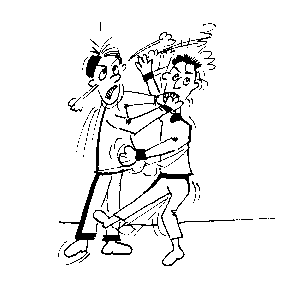Information & Design
Designing for humans
Designing for humans

Download ‘printer-friendly’ PDF version (File size: 11 KB)
Facilitation is the process of enabling groups to work cooperatively and effectively. Facilitation is often an important part of usability activities. In particular, facilitation is important in circumstances where people of diverse backgrounds, interests and capabilities work together.
It is important that all participants are aware of, and agree with, the purpose of the session. The purpose should be worded clearly and simply. Ideally it should be visible at all times so that participants can be reminded of it if necessary. A clear agenda helps focus participants on the work at hand, and helps the facilitator enforce time-keeping.
Make sure that all participants know each other by name. Use name tags if appropriate. Have participants introduce themselves at the start of a session. As facilitator, introduce yourself first; this helps others decide what they will say.
Make sure participants know the location of bathrooms. If you are providing food, check whether there are any specific dietary requirements. Groups in design sessions may become very enthusiastic about their work and reluctant to take breaks. Tired people do not work well. As a minimum, have a fifteen minute break every two hours.
Write a set of ground rules, and ensure that all participants agree to them. For example:
Groups work best when individuals are made to feel comfortable expressing their ideas. Encourage all participants to listen to what others are saying. If a session is splintering into separate discussion groups, halt them politely and ask them to deal with one discussion at a time.
In any group, some individuals will be less inclined to speak up. Watch out for signs that people are not involved. Be aware of any participant keeping their head down, doodling, or showing similar lack of engagement. Some people may be so quietly spoken that they are susceptible to interruptions by others. To engage and encourage these people, ask them for their opinions and comments.
As facilitator, you must be attentive to what is happening at all times. Do not get side-tracked into long discussions with individuals.
You can encourage cooperative behaviour by behaving in a way that is at all times honest, open, respectful and non-partisan. If a disagreement arises, do not take sides. Instead, ask the group to resolve the issue.
Many people are nervous about facilitation. Your nervousness is much more apparent to yourself than to others. Remember that it is the responsibility of group to work towards the required outcome – your responsibility is simply to support the process. If possible, have someone critique your performance as facilitator after the session, and use this feedback to improve your skills.